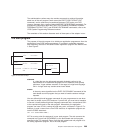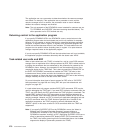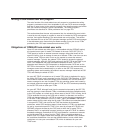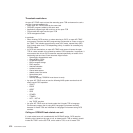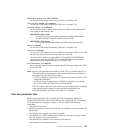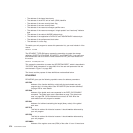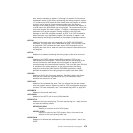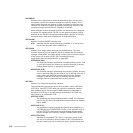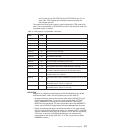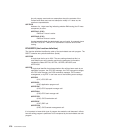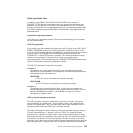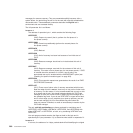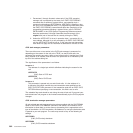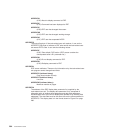
exit is called on the QR TCB with the UEPTUTCB bit set. For all
other calls, CICS abends the transaction without invoking the
task-related user exit.
The second and third bytes contain a value indicating the TCB mode of its
caller. This is represented in DFHUEPAR as both a two-character code and
a symbolic value, as follows:
Table 13. TCB indicators in DFHUEPAR. Description
Symbolic
value
2-byte
code
Description
UEPTQR QR The quasi-reentrant mode TCB
UEPTRO RO The resource-owning mode TCB
UEPTCO CO The concurrent mode TCB
UEPTSZ SZ The FEPI mode TCB
UEPTRP RP The ONC/RPC mode TCB
UEPTFO FO The file-owning mode TCB
UEPTSL SL The sockets listener mode TCB
UEPTSO SO The sockets mode TCB
UEPTS8 S8 The secure sockets layer mode TCB
UEPTD2 D2 The CICS–DB2 housekeeping mode TCB
UEPTJ8 J8 The J8 open TCB, used for JVMs that are in CICS key
UEPTJ9 J9 The J9 open TCB, used for JVMs that are in user key
UEPTJM JM The JM open TCB, used with the IBM SDK for z/OS, V1.4.2 for
the master JVM that initializes the shared class cache
UEPTL8 L8 An L8 open TCB, used for OPENAPI TRUEs, or OPENAPI
programs that are in CICS key
UEPTL9 L9 An L9 open TCB, used for OPENAPI programs that are in user
key
UEPTX8 X8 An X8 open TCB, used for C and C++ programs, compiled with
the XPLINK option, that are in CICS key
UEPTX9 X9 An X9 open TCB, used for C and C++ programs, compiled with
the XPLINK option, that are in user key
UEPPBTOK
Address of a 4-byte field containing the z/OS Workload Manager (WLM)
Performance Block Token. An exit program can use this token to:
v Access information (such as the service class token, SERVCLS) in the
WLM Performance Block. To do so, it must use the WLM EXTRACT
macro, IWMMEXTR, passing the Performance Block Token as the
MONTKN input parameter. For more information about the IWMMEXTR
macro, see z/OS MVS Programming: Workload Management Services.
v Relate its resource manager's performance blocks for the work request
with the original CICS performance block. For example, DBCTL and DB2
need to correlate the work they do on behalf of CICS with the originating
CICS task, so that the z/OS Workload Manager can measure the
performance of the whole CICS task. To do this it must use the WLM
IWMMRELA macro.
Chapter 2. Task-related user exit programs 277



